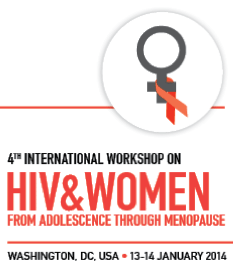Outcomes in infants exposed to lopinavir/ritonavir in utero
1 February 2014. Related: Conference reports, Antiretrovirals, Pregnancy, Paediatric care, Intl Workshop on HIV and Women 4th 2014.

Polly Clayden, HIV i-Base
A systematic review of outcomes of infants born to women receiving lopinavir/ritonavir (LPV/r) in pregnancy – performed by investigators from the originator company – suggests that in utero exposure may not increase the risk of preterm birth.
M Martinez presented data from an assessment of the vertical transmission rate and risk of adverse infant outcomes among women treated with LPV/r based regimens in pregnancy at the 4th HIV & Women Workshop, 2014.
The investigators searched PubMed/EMBASE databases and HIV conferences for studies published to the end of January 2013 or March 2013 respectively. They looked for randomised trials or prospective/retrospective cohort studies of outcomes of infants exposed to LPV/r in utero as a primary or secondary endpoint.
The investigators also searched the AbbVie Global Safety Database for the infant outcome of prematurity to the end of December 2011.
They included 27 publications (n=12) and abstract presentations (n=15) describing 17 studies in the review. These studies reported on 4331 women receiving LPV/r in pregnancy, of these 2263 received LPV/r 800/200 mg/day, 101 received >800/200 mg/day, and for 1967 the dose was undocumented. Table 1 shows the results.
| Outcome | Studies reporting outcome (n) | Rate reported (%) |
|---|---|---|
| Vertical transmission | 10 | 0 – 2.8 |
| Preterm birth | 13 | 8.7 – 25.0 |
| Very preterm birth | 6 | 0.4 – 5.0 |
| Low birth weight | 6 | 0.4 – 5.0 |
| Very low birth weight | 4 | 0.3 – 3.0 |
| Still birth | 5 | 1.0 – 4.8 |
| Infant mortality | 4 | 0 – 5.8 |
Post-marketing safety data from the company database showed a preterm rate of 0.66/10,000 patient treatment years for LPV/r.
One study showed similar preterm, low birth weight and vertical transmission rates for women receiving 800/200 mg and >800/200 mg LPV/r.
Three studies reporting birth defects showed a prevalence of 2% to 8.5%, which compared to the Antiretroviral Pregnancy Registry (APR) rate of 2.4%.
In one study the incidence of mortality among preterm infants was similar with LPV/r based treatment to that for women treated with triple NRTIs.
The authors concluded: “Preterm birth rates in the included studies reflected the rate for the geographical area in which the study was conducted; these data and post-marketing safety data suggest that in utero exposure to LPV/r may not increase risk of preterm birth. Infants born to women who received LPV/r 800/200 mg/day and those born to women who received >800/200 mg/day had similar rates of preterm birth, low birth weight, and MTCT.”
Comment
Although analyses (particularly conclusions) performed by the originator company need to be approached with a little caution, these can be useful and results from this one supports the current APR data for LPV/r.
Reference:
Martinez M et al. Systematic review of clinical outcomes of infants born to women receiving lopinavir/ritonavir-based antiretroviral therapy (ART) during pregnancy. 4th International Workshop on HIV & Women, Washington DC. 13-14 January 2014. Oral Abstract_21.
http://regist2.virology-education.com/2014/4hivwomen/docs/31_Martinez.pdf

